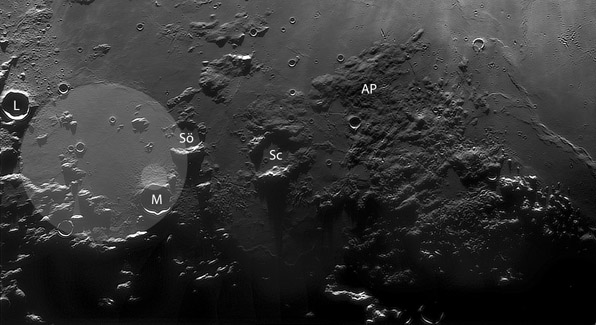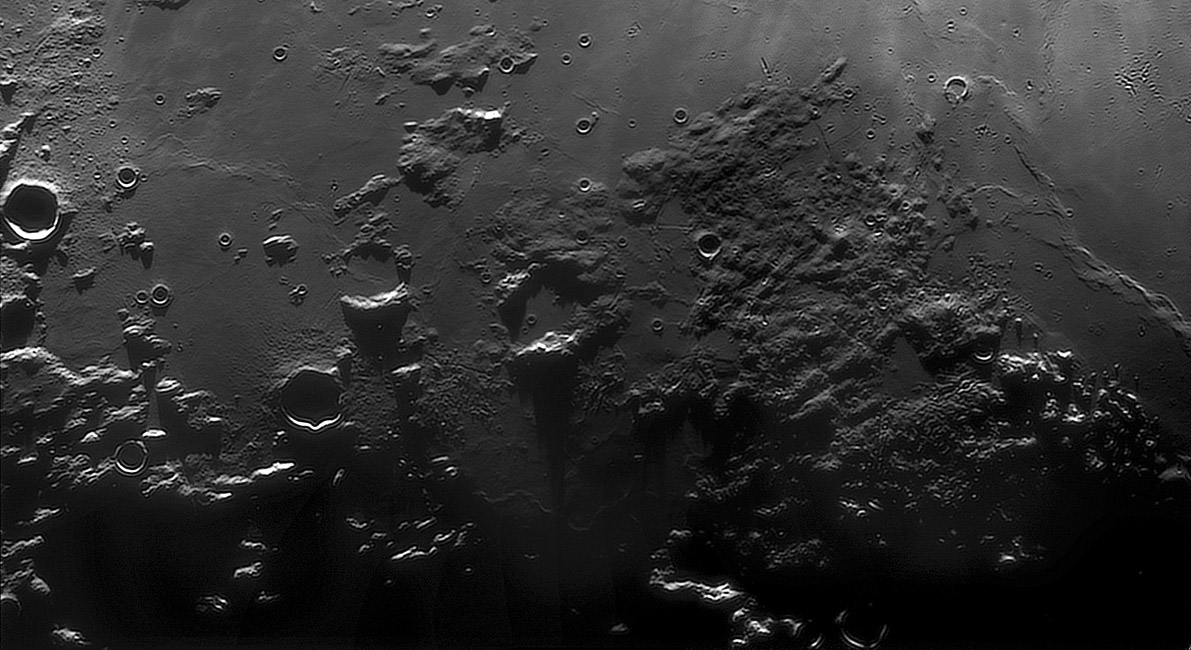Difference between revisions of "November 10, 2013"
(Created page with "__NOTOC__ =Destruction by Ejecta And Lava= <!-- ws:start:WikiTextHeadingRule:0:<h1> --> <!-- ws:start:WikiTextLocalImageRule:14:<img src="/file/view/LPOD-Nov...") |
|||
| Line 3: | Line 3: | ||
<!-- ws:start:WikiTextHeadingRule:0:<h1> --> | <!-- ws:start:WikiTextHeadingRule:0:<h1> --> | ||
| − | <!-- ws:start:WikiTextLocalImageRule:14:<img src="/file/view/LPOD-Nov10-13.jpg/467614720/LPOD-Nov10-13.jpg" alt="" title="" /> --> | + | <!-- ws:start:WikiTextLocalImageRule:14:<img src="/file/view/LPOD-Nov10-13.jpg/467614720/LPOD-Nov10-13.jpg" alt="" title="" /> -->[[File:LPOD-Nov10-13.jpg|LPOD-Nov10-13.jpg]]<!-- ws:end:WikiTextLocalImageRule:14 --><br /> |
<em>image by [mailto:jupiter182002@yahoo.ca Maximilian Teodorescu], Romania</em><br /> | <em>image by [mailto:jupiter182002@yahoo.ca Maximilian Teodorescu], Romania</em><br /> | ||
| + | <table class="wiki_table"> | ||
| + | <tr> | ||
| + | <td><!-- ws:start:WikiTextLocalImageRule:15:<img src="/file/view/LPOD-Nov10b-13.jpg/467614772/LPOD-Nov10b-13.jpg" alt="" title="" /> -->[[File:LPOD-Nov10b-13.jpg|LPOD-Nov10b-13.jpg]]<!-- ws:end:WikiTextLocalImageRule:15 --><br /> | ||
</td> | </td> | ||
<td>Max's stunning new image was submitted with this north to the right orientation, and this unfamiliarity caused me to look at the scene with fresh eyes (even though it was getting late at night). Can you identify where it is? What struck me was the clumpy piles of Imbrium Basin ejecta in the right half of the image, especially where it piles on the northern and western rim of Schröter (Sc). This is the clearest view yet of where the ejecta ends - it is the dark lumpy stuff - and where the crater's original rim is - its bright. Another crater near the right edge is about the same diameter as Schröter but its rim is completely veneered - pelted would be a better word - by thick basin ejecta. Rilles cut the ejecta and volcanism also deposited dark ash - the Aestuum Pyroclastics (AP) on top of the ejecta. The volcanism here really wanted to get out. At the south/left end of the image a long curved arc of mare ridges suggests the existence of an older, lava-covered crater about 130 km wide indicated with the light circle between Mösting (M) and Lalande (L). A shorter curved segment suggests a former crater just to the west of Mösting. Other craters are hinted at less strongly by other remnant pieces of terrain. Remember, almost nothing but impact cratering created topography on the Moon. <br /> | <td>Max's stunning new image was submitted with this north to the right orientation, and this unfamiliarity caused me to look at the scene with fresh eyes (even though it was getting late at night). Can you identify where it is? What struck me was the clumpy piles of Imbrium Basin ejecta in the right half of the image, especially where it piles on the northern and western rim of Schröter (Sc). This is the clearest view yet of where the ejecta ends - it is the dark lumpy stuff - and where the crater's original rim is - its bright. Another crater near the right edge is about the same diameter as Schröter but its rim is completely veneered - pelted would be a better word - by thick basin ejecta. Rilles cut the ejecta and volcanism also deposited dark ash - the Aestuum Pyroclastics (AP) on top of the ejecta. The volcanism here really wanted to get out. At the south/left end of the image a long curved arc of mare ridges suggests the existence of an older, lava-covered crater about 130 km wide indicated with the light circle between Mösting (M) and Lalande (L). A shorter curved segment suggests a former crater just to the west of Mösting. Other craters are hinted at less strongly by other remnant pieces of terrain. Remember, almost nothing but impact cratering created topography on the Moon. <br /> | ||
Revision as of 22:36, 1 January 2015
Destruction by Ejecta And Lava
image by Maximilian Teodorescu, Romania
 |
Max's stunning new image was submitted with this north to the right orientation, and this unfamiliarity caused me to look at the scene with fresh eyes (even though it was getting late at night). Can you identify where it is? What struck me was the clumpy piles of Imbrium Basin ejecta in the right half of the image, especially where it piles on the northern and western rim of Schröter (Sc). This is the clearest view yet of where the ejecta ends - it is the dark lumpy stuff - and where the crater's original rim is - its bright. Another crater near the right edge is about the same diameter as Schröter but its rim is completely veneered - pelted would be a better word - by thick basin ejecta. Rilles cut the ejecta and volcanism also deposited dark ash - the Aestuum Pyroclastics (AP) on top of the ejecta. The volcanism here really wanted to get out. At the south/left end of the image a long curved arc of mare ridges suggests the existence of an older, lava-covered crater about 130 km wide indicated with the light circle between Mösting (M) and Lalande (L). A shorter curved segment suggests a former crater just to the west of Mösting. Other craters are hinted at less strongly by other remnant pieces of terrain. Remember, almost nothing but impact cratering created topography on the Moon.
|
COMMENTS?
Click on this icon File:PostIcon.jpg at the upper right to post a comment.




